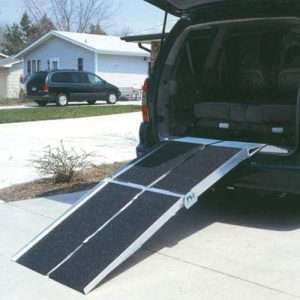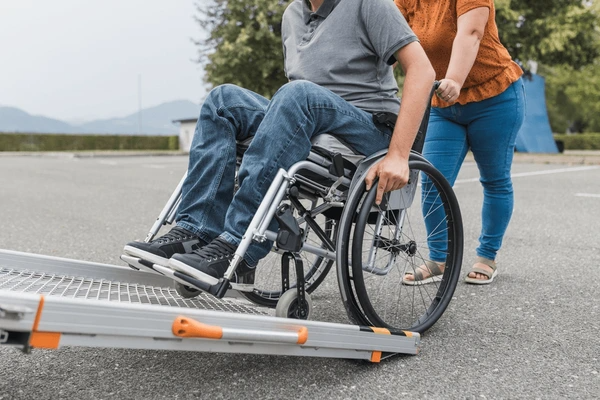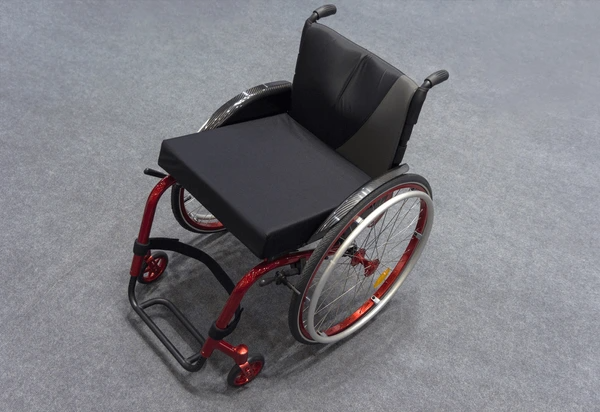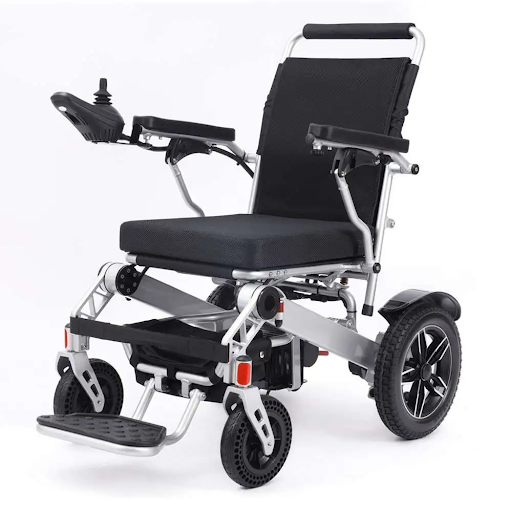1
May
How to choose a Wheelchair Ramp
For the physically challenged, wheelchair ramps are extensions of a doorway in that they allow someone to enter and exit a room or building. However, unlike a doorway, a wheelchair ramp supports physical weight. Consequently, it must meet a certain standard of construction, or it can fail, leading to physical harm, emotional distress, or litigation.
1. Capacity
Capacity involves the ramp's ability to support a wheelchair, its occupant, and also anyone guiding the wheelchair up the ramp. In total, the capacity should be rated at a minimum of 500 pounds. However, it is also important to note that capacity does not simply indicate when a ramp fails. Instead, the ramp should not buckle or bend.
2. Value
Some ramps can be purchased for a few hundred dollars or less. Some others, however, might cost a few thousand dollars or more. The cost of ramps is linked to the value of the ramps, which, itself, consists of such features as durability and design.
In terms of design, upscale ramps might have a side rail made of stainless steel. It might also be fitted with traction along with the flooring and a smooth bevel at each end to ease a person's entrance and exit. Some ramps are fabricated out of metal alloy and already have guardrails in place. Finally, some are modular, and each module will add length and cost to the ramps.
3. Portability
With the help of another person, some ramps can be picked up and put into the back of a truck or van. Telescoping ramps, for instance, are durable and allow you to extend them to the length you need. They are often made of steel, aluminum, or metal alloy and can support tremendous weights with very little bowing.
Other types of ramps are made to serve as a permanent fixture to a sidewalk, patio, or entryway. Depending on your needs, you should determine if you require one or both types of ramps.
Depending on the vehicles at your disposal, large ramps made of pre-molded steel or metal alloy can be taken apart, loaded onto a truck, and reinstalled at another location. If you are going away for a week or two, this type of work is worth the effort as it means you do not have to purchase a portable ramp to take with you.
4. Installation method
A portable ramp requires no actual installation in that all you have to do is place it on the ground to serve as an inclined bridge between a ground-level pathway and an elevated doorway or path. The aforementioned telescoping ramps, for instance, store in a compact size and extend to lengths between 10 and 30 feet.
However, other types need to be installed much as you would a fence, and these involve digging post holes, pouring concrete, and setting up the framing for the ramp. Depending on your skillset, you can often install a ramp on your own. That said, a professional installation service will do the job quicker. Because they have more experience, the installation will be precise and safe.
Ramps that fall somewhere between these two extremes include modular ramps that you can piece together. Each segment, for instance, is pre-made out of metal, and the pieces fit together and lock into place. Guardrails are already installed, and the biggest problem is simply having the pieces delivered to your home or business. That said, many places deliver, so this is not much of a problem. The important factor is selecting one that you can afford to have installed or a modular ramp that you can piece together yourself.
5. Slope
Wheelchair ramps, of course, are necessary because the wheels of a wheelchair do not roll up onto higher or lower surfaces without jarring the rider. If the height difference is too high, the chair must be lifted. All this is obvious, but what might not be obvious is that the height of the doorway or step that you want to reach determines the slope, or pitch, of the ramp.
For instance, a short ramp that you can place on the ground and prop on a step will often create a pathway that is much too steep to roll up. Consequently, you need to buy a ramp that is long enough to provide easy navigation up the ramp without, for instance, having to give the wheelchair a sturdy shove. The best rule of thumb is to purchase a ramp long enough to create a rise of a couple inches of incline per linear foot. Any slope steeper than this is going to make moving the wheelchair up the ramp troublesome..
6. Shape
In terms of pitch, it is sometimes necessary to achieve a gradual slope by purchasing a ramp that is curved. Curved ramps, for instance, or ones that reverse direction several times allow the height to increase comfortability while allowing the ramp to fit into a compact area. In comparison, a straight ramp might have to be 40 feet long to achieve a similar incline, and for many properties, extending a 40-foot ramp directly out into the yard toward the sidewalk is simply not feasible.
Share:







Comments (5)
I am extremely impressed with your writing skills as well as with the layout on your weblog. Christel Arnoldo Marnie
Thanks for the blog post. Much thanks again. Really Cool. Kym Rayner Solly
I am so grateful for your blog post. Thanks Again. Really Cool. Pam Tammy Micki
Great post! We will be linking to this particularly great content on our site. Keep up the good writing. Deb Davis Neille
I have been checking out some of your articles and i can state clever stuff. I will make sure to bookmark your blog. Constantia Preston Linker